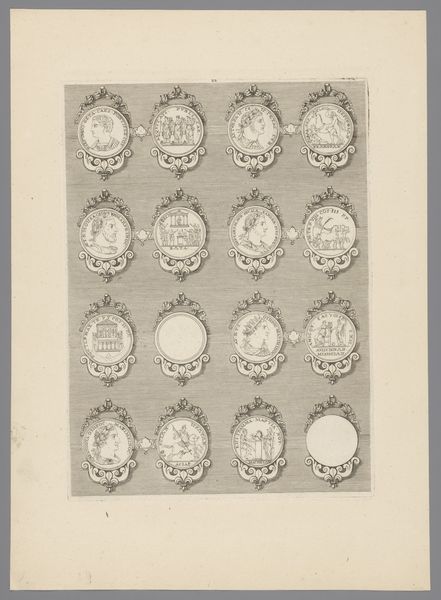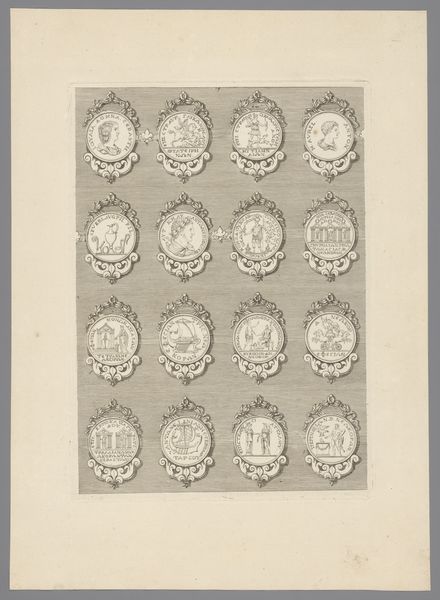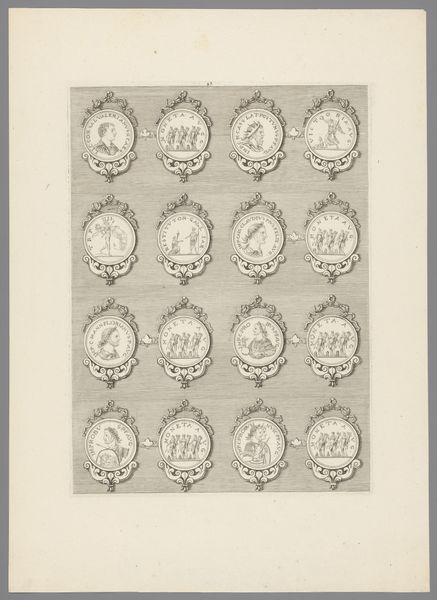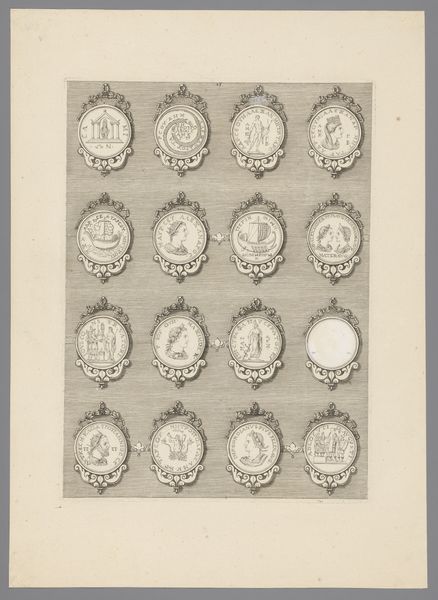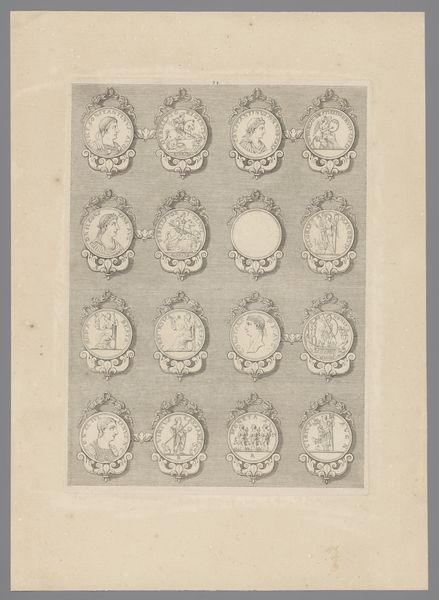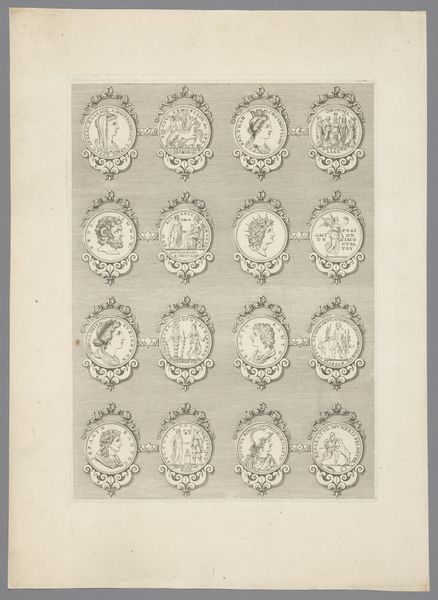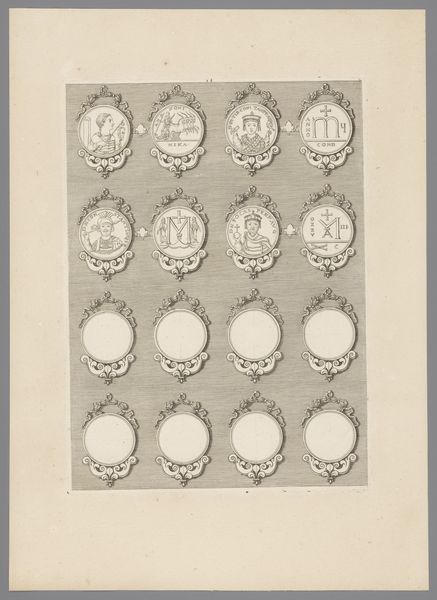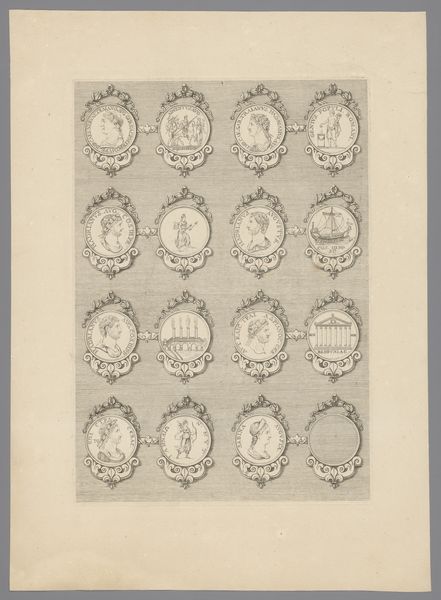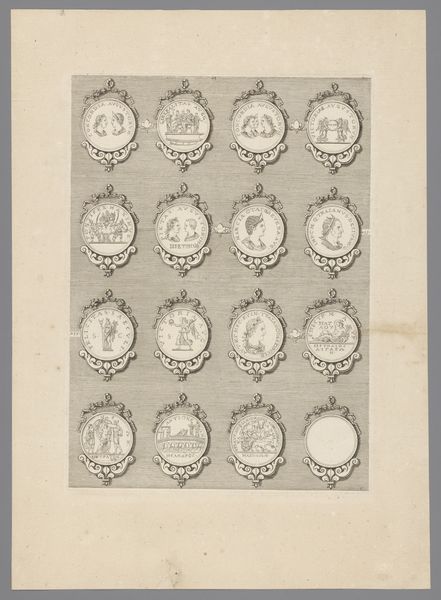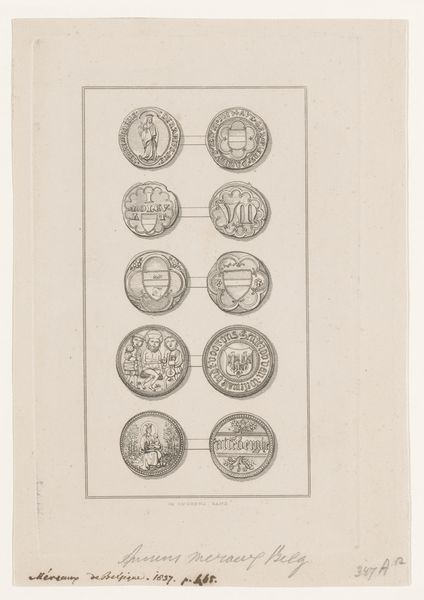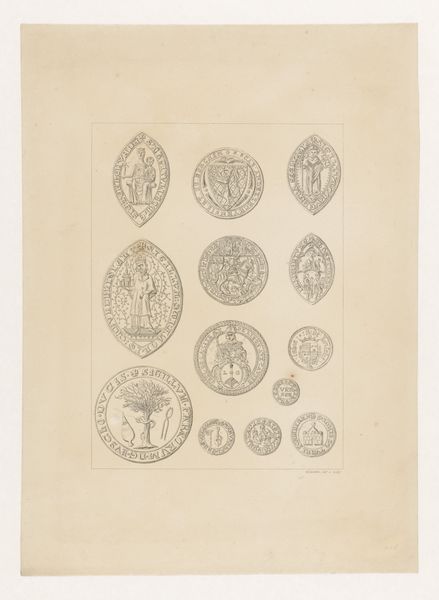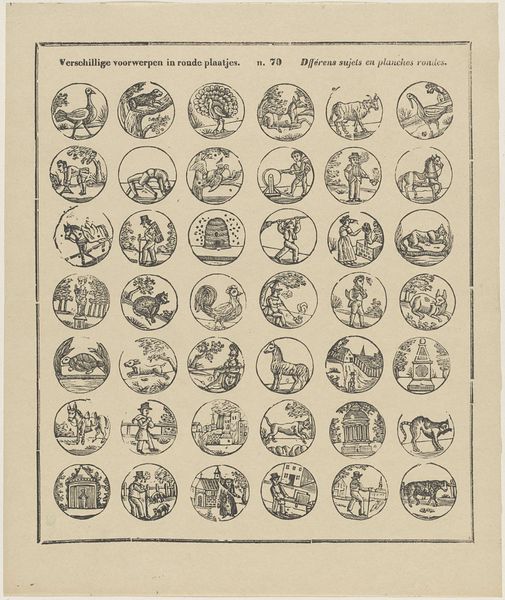
graphic-art, print, paper, engraving
#
portrait
#
graphic-art
#
ink paper printed
# print
#
old engraving style
#
white palette
#
paper
#
11_renaissance
#
ancient-mediterranean
#
history-painting
#
engraving
#
monochrome
Dimensions: height 396 mm, width 290 mm
Copyright: Rijks Museum: Open Domain
Curator: This engraving, dating roughly from 1647 to 1682, is titled "Zestien penningen met versierde lijsten," or "Sixteen Pennies with Decorated Frames." The artist is Simon de la Boissière. It’s monochrome, primarily utilizing ink on paper, showcasing a series of small, medallion-like images. Editor: Immediately, what strikes me is the craft. Look at the detail packed into these tiny circular frames. The labor involved in creating these consistent, repetitive patterns across each one seems considerable. Was this intended for mass consumption, perhaps? Curator: It likely served a commemorative or possibly educational purpose. The imagery references classical antiquity; we see figures in togas, depictions of classical architecture and mythological scenes, so the print was meant for circulation among educated elites, who often consumed imagery validating and re-imagining their links to power and culture. Editor: You know, it's fascinating to consider the specific material choices too, I mean the selection of ink and paper suggests something beyond simple reproducibility, no? We are not dealing with cheap material but something durable, intended to last and be examined closely, hinting at a certain social value of the piece. Curator: I agree. These detailed images printed on what would likely have been relatively high-quality paper for the time, suggests a level of investment, especially regarding its engagement within a very public sphere. Prints during this period held immense political importance. Editor: So the social power is also about controlling what kind of art and which version of history become more visible? And that explains why the focus is in something more classical like history or portraits. Curator: Precisely. Now consider, how might an object like this, created using processes accessible to a workshop rather than requiring the singular genius of a painter, have impacted perceptions of art's value at the time? Editor: That’s key. These prints would challenge conventional understanding of artmaking by making its production accessible, even reproducible, blurring boundaries of ‘original’ versus ‘copy’. And the level of labor here seems intentionally exhibited, elevating printmaking beyond mere reproduction into an appreciated craft. Curator: So it really served not just as art, but as propaganda tool and also to make printmaking visible in art circuits. Editor: Exactly, its legacy lies not only in the content of these little ‘pennies’, but within the methods employed to fabricate, disseminate, and imbue this artwork with lasting significance. Curator: Indeed. A multi-layered object speaking to both aesthetic values and socio-political systems.
Comments
No comments
Be the first to comment and join the conversation on the ultimate creative platform.
